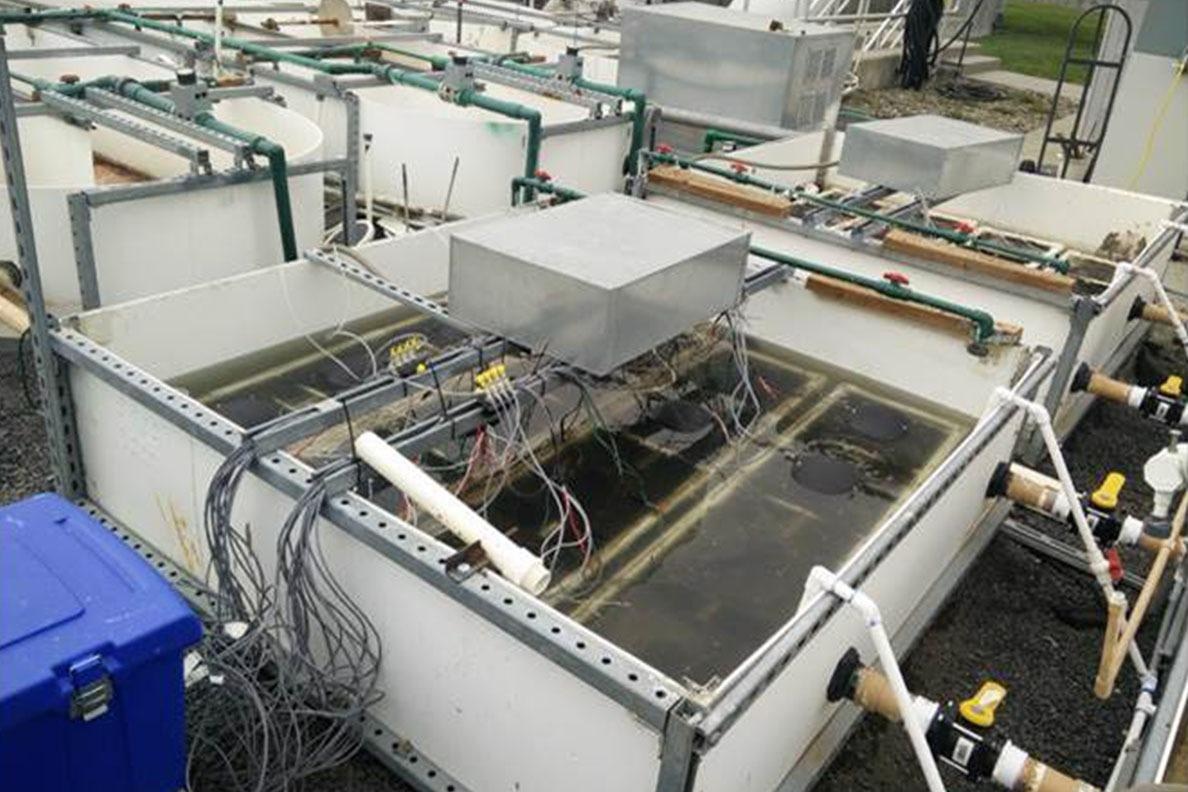Dec 18 2020
Scientists from Washington State University (WSU) have designed a sustainable wastewater treatment system that depends on electron-producing bacterial communities to purify the water.
 A switchable bioelectrochemical wastewater treatment system was tested at the pilot scale at a wastewater treatment facility in Moscow, Idaho. Image Credit: Washington State University.
A switchable bioelectrochemical wastewater treatment system was tested at the pilot scale at a wastewater treatment facility in Moscow, Idaho. Image Credit: Washington State University.
In the future, the study could help achieve minimal dependence on the energy-intensive processes that are utilized to shift and treat wastewater, which is responsible for as much as 2% of the overall electrical energy consumption in the United States.
Under the guidance of Abdelrhman Mohamed, a postdoctoral research associate, and Haluk Beyenal, Paul Hohenschuh Distinguished Professor in the Gene and Linda Voiland School of Chemical Engineering and Bioengineering, the investigators have described their study in the Bioelectrochemistry journal.
Aeration is an essential and energy-intensive procedure used for treating wastewater to eliminate contaminants. Pumps operate constantly to mix air into water, introducing oxygen that is used by bacteria to oxidize contaminants and organic matter. In their study, the team employed a special microbial fuel cell system that was designed by them as an alternative to external aeration.
If we cut the energy use even by a small percentage in the U.S., that is billions of dollars in annual costs. Energy costs are one part but that also means reducing environmental emissions, too.
Abdelrhman Mohamed, Postdoctoral Research Associate, Washington State University
Microbial fuel cells function by allowing the bacteria to transform chemical energy into electricity in a way that is analogous to a battery. These fuel cells produce only minimal electricity and they have been employed in low-power applications, particularly in remote regions where batteries cannot be used.
With regard to wastewater treatment, the microbial fuel cell can play the role of aeration and oxygen—accepting electrons that are produced by bacteria as a product of their metabolic activity.
Besides substituting for oxygen, the fuel cell system is also capable of producing a small amount of electricity, which can be utilized to do more aeration.
We tried to think about it in two steps. We lower the energy costs because you don’t have to aerate and add oxygen, but the second part is we generate a little power that we can use for some useful applications in the wastewater treatment plant itself.
Abdelrhman Mohamed, Postdoctoral Research Associate, Washington State University
According to Beyenal, “It’s like we’re double dipping. We use the electrodes and then the electron acceptor to promote microbial growth. On the other hand, we gain a little bit of electricity for the pump and to aerate. With this approach it is more powerful and can treat the wastewater faster.”
At the experimental level, scientists have used the fuel cells in wastewater treatment systems under optimized conditions, but these cells usually fail under real-world and changing conditions.
The microbial fuel cells lack internal regulation controlling the potential of anodes and cathodes, and thus cell potential. This can cause system failure.
Abdelrhman Mohamed, Postdoctoral Research Associate, Washington State University
In the system designed by the WSU team, the investigators added an additional electrode that provides more control to their fuel cell system. The system can be switched. It can operate on its own as a microbial fuel cell without using any energy, as it gradually cleans up waste.
Alternatively, the system can be switched to one that makes use of a smaller amount of energy compared to aeration and that purifies more intensely. Mohamed created an inexpensive portable electronic device that regulates the electrodes.
The team successfully operated their new system for one year in the lab without any sign of failure and also operated it at the pilot scale at a test wastewater treatment facility located in Moscow, Idaho.
Professor Erik R. Coats from the University of Idaho Environmental Engineering owns and operates the pilot-scale treatment facility. He was also a collaborator on the project. The new system eliminated waste at rates similar to aeration.
The system could be utilized separately from the power grid and, according to the team, it could someday be utilized for small-scale wastewater treatment plants, for example, in highly rural areas or for clean up around cattle operations.
“Over time, we have made a lot of progress,” added Mohamed, who initially became interested in microbial fuel cells while he was an undergraduate at WSU. “There are still challenges that we need to overcome to see this as a real application, but it’s exciting to see the field moving significantly over a period of time,” he further added.
“These are difficult systems to build. I think everything is so easy when I write the proposal, but this takes a lot of time and a lot of new discovery. There is nothing like this on the market,” Beyenal concluded.
The study was financially supported by the Office of Naval Research.
Journal Reference:
Mohamed, A., et al. (2020) Large-scale switchable potentiostatic/microbial fuel cell bioelectrochemical wastewater treatment system. Bioelectrochemistry. doi.org/10.1016/j.bioelechem.2020.107724.